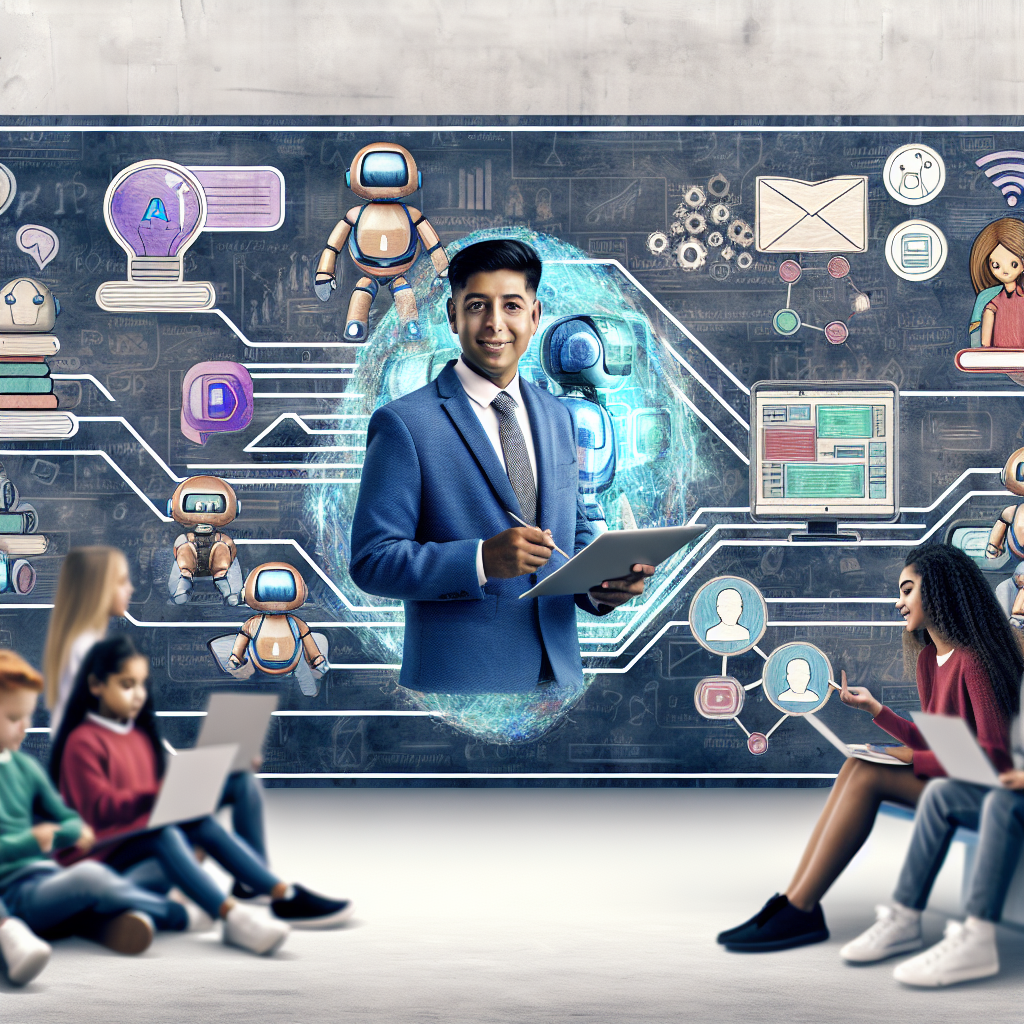Did you know that 47% of learning management systems will use AI by 2024? The integration of artificial intelligence in education isn’t just a trend – it’s a revolution that’s fundamentally changing how we teach and learn! As someone who’s been following edtech developments for years, I can tell you that we’re witnessing an unprecedented transformation in educational methods, tools, and outcomes.
Understanding AI in Education
When we think about artificial intelligence in education, it’s much like having a highly skilled teaching assistant available 24/7. Just as a GPS system adapts our route based on traffic conditions, AI in education adapts to each student’s unique learning journey. This revolutionary technology has evolved significantly from its humble beginnings in the 1970s, when simple computer-aided instruction was considered cutting-edge.
Historical Development and Current State
The journey of AI in education has been fascinating, to say the least. What started with basic drill-and-practice software has now blossomed into sophisticated learning platforms. Today, we’re seeing widespread adoption across educational institutions, from elementary schools to prestigious universities. For instance, Georgia Tech famously employed an AI teaching assistant named ‘Jill Watson,’ which students couldn’t distinguish from human TAs!
Benefits and Challenges in Modern Education
Just as smartphones transformed communication, AI is revolutionizing education. However, like any powerful tool, it comes with its own set of opportunities and hurdles. While it offers unprecedented personalization capabilities, we must carefully navigate concerns about technology dependence and the digital divide.
Core Applications of AI in Learning
Personalized Learning Pathways
Imagine having a teacher who perfectly understands your learning style and pace – that’s what AI-powered personalized learning aims to achieve. Similar to how Netflix recommends shows based on your viewing habits, these systems adapt educational content to match your learning preferences and progress.
Intelligent Tutoring Systems
Modern AI tutoring systems are like having a patient, knowledgeable mentor available at any time. They can explain concepts in multiple ways, offer practice problems, and provide immediate feedback, much like a human tutor would.
Assessment and Analytics
The days of waiting weeks for graded papers are becoming obsolete. AI systems can now evaluate assignments instantly while providing detailed feedback. Learning analytics tools track student performance patterns much like how fitness apps monitor physical activity, helping identify areas needing attention before they become problematic.
Transforming Teaching Methods
AI-Enhanced Lesson Planning
Teachers are now leveraging AI to create more engaging and effective lessons. Think of it as having a super-powered teaching assistant that can suggest activities, generate materials, and even predict which approaches might work best for different groups of students.
Real-time Support Systems
Just as modern cars provide instant feedback about performance and potential issues, AI-powered classroom systems can alert teachers to students who might be struggling or disengaged. This allows for immediate intervention rather than waiting for test results to identify problems.
Streamlined Administrative Tasks
By automating routine tasks like grading multiple-choice tests and tracking attendance, AI frees up valuable time for teachers to focus on what matters most – actual teaching and student interaction.
Future Perspectives and Challenges
Emerging Trends
The educational AI landscape is evolving rapidly, with emerging technologies like virtual reality and augmented reality being integrated into AI-powered learning systems. Imagine history lessons where students can virtually visit ancient civilizations, guided by AI tutors!
Ethical Considerations
Just as we’re grappling with privacy concerns in social media, the education sector must address data protection and ethical use of AI. Schools need to balance the benefits of personalized learning with student privacy and data security.
Implementation and Future Outlook
While the potential is enormous, many schools face practical challenges in implementing AI systems, from budget constraints to technical infrastructure limitations. However, as technology becomes more accessible and affordable, we’re likely to see AI becoming as common in classrooms as textbooks are today.
Conclusion
The integration of AI in education represents a pivotal moment in the evolution of learning. While challenges exist, the potential benefits of AI-powered education – from personalized learning to reduced teacher workload – are too significant to ignore. As we move forward, it’s crucial to embrace these technologies thoughtfully and ensure they serve the ultimate goal: better education for all.

